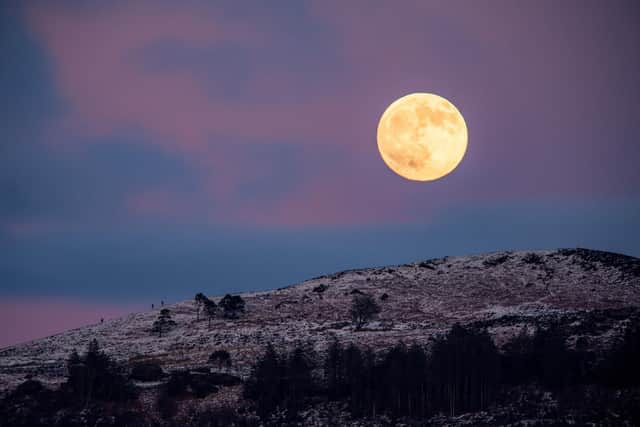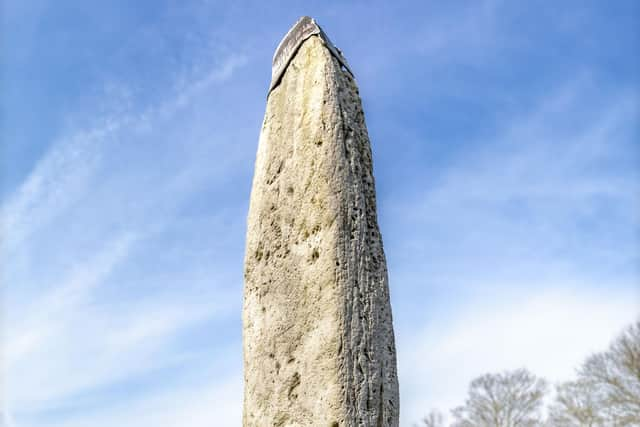Yorkshire's Prehistoric Monuments: Ex-University of York MA student on his love of stone circles and rock art
You’re 16 years old and a whole new world has just opened up: your mate can drive a car. Where do you go, with this new found freedom?
In Adam Morgan Ibbotson’s case, the location was life-changing: Castlerigg, a Lake District stone circle raised in about 3000 BC at a spot boasting panoramic views of snow-capped peaks such as Helvellyn.
Advertisement
Hide AdAdvertisement
Hide Ad“When I was about 16, my friend had just passed his driving test, and we said: ‘Oh, let's drive to Keswick’, which is where the stone circle is. So we drove up into the mountains in the snow,” says Adam.


“When we got there, because all the roads had been closed because of the snow, we arrived at this ring of stones that was... just breathtaking – untouched snow, surrounded by mountains. And from that point on, I was really just enamored by everything pre-historic, monument-based.”
He went on to study Cinematography and Film/Video Production at Anglia Ruskin University, and over the years has worked as a Production Runner for ITV, videographer for The Wildlife Trusts and set up his own Carvetti Films, making more than 30 short films.
However, he followed up his studies with an MA in Landscape Archaeology at the University of York. For his postgraduate dissertation, More than Stone: contextualising Cumbria’s prehistoric monuments, he was jointly awarded the Yorkshire Philosophical Society’s Herman Ramm Memorial Award – which recognises what is considered the university’s best dissertation on an archaeological subject – alongside Emma Trevarthen.
Advertisement
Hide AdAdvertisement
Hide AdIn 2021, the author released his first book, Cumbria's Prehistoric Monuments. His latest is Yorkshire’s Prehistoric Monuments, turning his attention to a region he believes competes with any across the globe in that aspect of heritage.


Adam, 30, who is originally from Windemere but lives in Northallerton, says: "I think Yorkshire is potentially the true heartland of prehistoric activity in the UK and they have some of the most wonderful prehistoric sites in the entire world, certainly in terms of its prehistoric art and standing stones.”
Yorkshire’s Prehistoric Monuments is split into four chapters, exploring various parts of the region: the North York Moors; the Vales of Mowbray and York, described as “the Heart of Neolithic Yorkshire”; the Yorshire Dales and Craven; and the Yorkshire Wolds of the East Riding.Readers can learn about sites such as Stoney Raise on Thornton Rust Moor at Addlebrough, a massive burial mound for people in the early Bronze Age situated in North Yorkshire, which provides the cover image for the book.
“It's one of the biggest in Britain, probably one of the biggest in the world, it is absolutely massive, and it sits on top of Addlebrough Fell. And that was one of the most breathtaking I came across just because of the sheer scale of it and the remoteness of it.”
Advertisement
Hide AdAdvertisement
Hide AdElsewhere, there is Rudston Monolith in Driffield, the tallest standing stone in Britain, Duggleby Howe near Malton, another mound where there are dozens of remains from different ages, and rock arts at spots like Ilkley Moor.


The information is accompanied by Adam’s own photography, including aerial shots.
Why is Yorkshire a place of such significance when it comes to prehistoric monuments?
Adam says: “Well, it's a bit of an open question, there's a lot of ideas on that. One of the reasons, potentially, is just something called survivor's bias, in that we have a lot of uplands here in Yorkshire, and people didn't build in the uplands after prehistory.
Advertisement
Hide AdAdvertisement
Hide Ad"When the Romans arrived, people started just sort of building in the lowlands and not bothering with the mountains. Previous to that, people built a lot in the uplands and there's a lot remaining. So a reason for the preservation of it might be because we have a lot of uplands where people built and then we're subsequently not touched.”
Another reason might be that the Vale of Mowbray and Vale of York, routes which gave the region a lot of trade potential from the south up to Scotland.
"We have the Thornborough Henges which are the biggest prehistoric sites in the entire county. They run in a line up the Vale of Mowbray, so there's huge ritual significance in those big trading areas.”
Ilkley Moor stands out as a significant site for prehistoric art because it is home to more than 400 decorated rocks, writes Adam, “boasting designs that vary from simple cup marks to intricate swirls”.
Advertisement
Hide AdAdvertisement
Hide AdReferring to rock arts across the region, he says: “There's there's a bit of hesitation to actually say when it was done because you can't date carvings. So how they were done is a bit up for debate because from the looks of things they weren't made using metal tools, they were picked out with bone or stone tools. Little chisels, it would take a lot of time to do it but people had quite a lot of time back then because they weren't busy watching EastEnders or whatever.
"No one knows why it was done and there is a difference, as well, interestingly, in the types of rock art.
"People think there are very strict ideas of what prehistoric rock art in the UK looks like, what's called cup and ring marks, which is like either hollowed out dips or surrounded by circles, but there seems to be a difference in where those things are found. There's different styles rock art in different regions of the county. And the styles here are very different to the ones in the West of England, where you get things that are inspired by Irish rock art.
"So there's actually a very big difference in the rock art styles across the UK and how they're actually done.”
Yorkshire’s Prehistoric Monuments by Adam Morgan Ibbotson, published by The History Press, is out now.